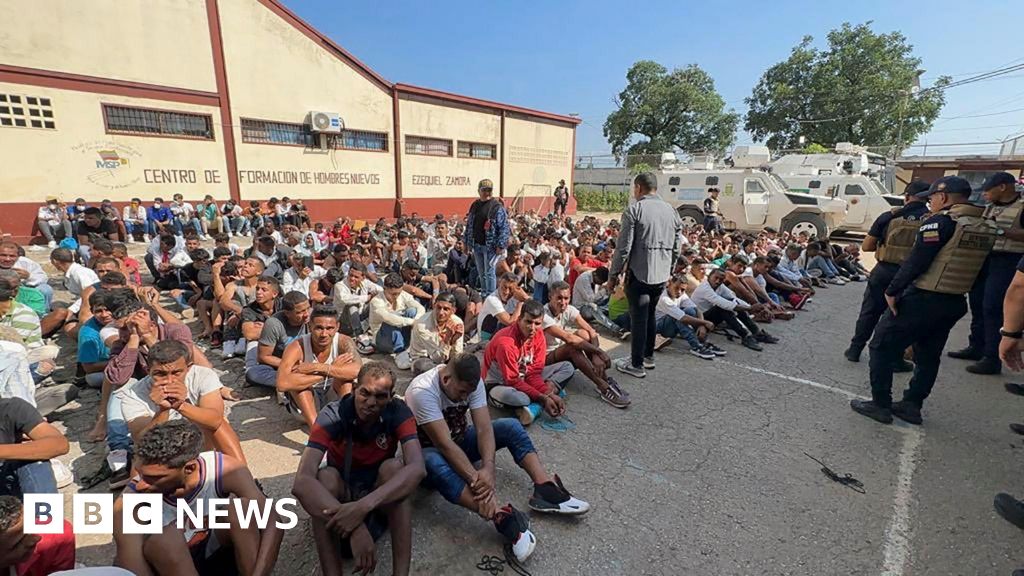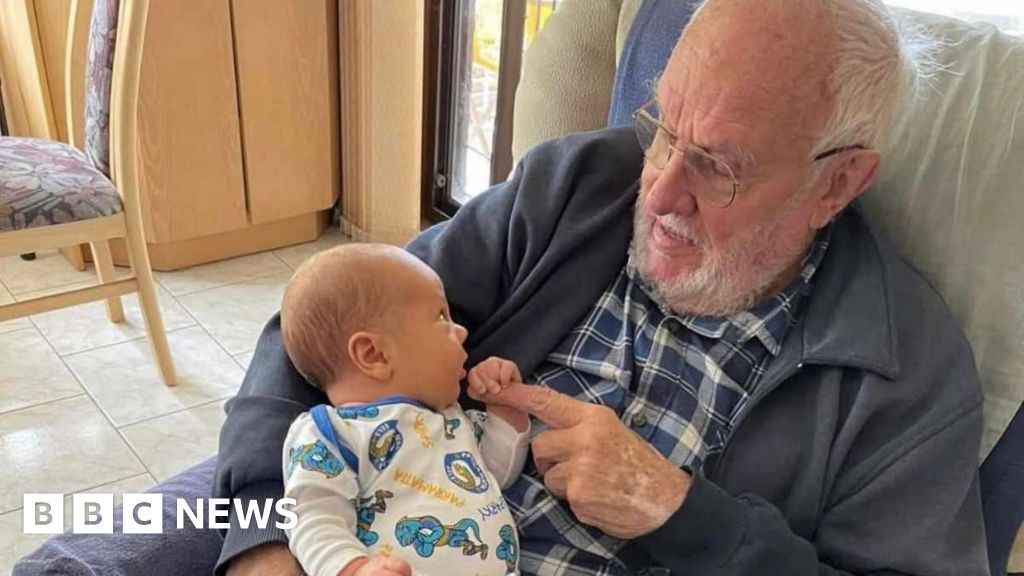Wednesday, Aug. 20, 2025 | 2 a.m.
Editor’s note: “Behind the News” is the product of Sun staff assisted by the Sun’s AI lab, which includes a variety of tools such as Anthropic’s Claude, Perplexity AI, Google Gemini and ChatGPT.
The annexation of Crimea by Russia in 2014 marked a pivotal moment in modern European history, setting the stage for the ongoing conflict between Russia and Ukraine that resumed in 2022.[1,2] This strategic Black Sea peninsula has become both a symbol of territorial dispute and a critical military asset that continues to shape the dynamics of the Russo-Ukrainian War.
It’s important to know the long-term context to fully understand the current conflict and the implications of President Donald Trump’s negotiations between Presidents Vladimir Putin and Volodymyr Zelenskyy.
Historical background and the 2014 seizure
Crimea’s complex history underlies much of the current conflict. The peninsula was transferred from Russia to Ukraine in 1954 during the Soviet era, remaining part of Ukraine when the Soviet Union dissolved.[4,24] However, its strategic location and the presence of Russia’s Black Sea Fleet in Sevastopol made it a point of contention.
The crisis began in early 2014 following Ukraine’s Revolution of Dignity and the ousting of pro-Russian President Viktor Yanukovych.[8] In late February, unmarked Russian troops — later dubbed “little green men” — swiftly seized key military, government and communication sites across Crimea.[6,13] These forces took control of the Crimean parliament and other strategic locations, with Russia initially denying their involvement but later acknowledging their role.
The operation was largely bloodless but swift and decisive.[6] By early March, Russia had established full military control of the peninsula. A controversial referendum was held on March 16, 2014, under Russian military occupation, with official results showing overwhelming support for joining Russia.[4,13] The international community widely condemned this referendum as illegal and conducted under duress.
Russia formally annexed Crimea in March 2014, triggering widespread international condemnation and sanctions.[4,7] The annexation violated Ukraine’s sovereignty and international law, representing the first major territorial change in Europe since World War II.
Russia’s justifications for annexation
Russia advanced several arguments to justify the annexation, though these were largely rejected by the international community:[11,15]
- Historical and cultural claims: President Vladimir Putin argued that Crimea had been historically Russian for centuries and was only transferred to Ukraine during the Soviet era as a mistake.[11,12] He described Crimea as having “sacred and civilizational” significance for Russia, portraying the annexation as correcting a historical injustice.[12]
- Protection of ethnic Russians: Moscow claimed responsibility for protecting ethnic Russians and Russian speakers in Crimea, arguing they faced threats from the new Ukrainian government, which Russia characterized as nationalist and hostile.[15,18]
- Self-determination: Russia pointed to the referendum results as evidence of the Crimean people’s right to self-determination, despite international criticism of the vote’s legitimacy.[15,17]
- Strategic necessity: The peninsula’s immense strategic value — hosting Russia’s Black Sea Fleet and controlling key maritime routes—factored heavily into Russia’s calculus, though this was presented more as a secondary consideration.[18]
Military transformation and buildup
Following annexation, Russia dramatically transformed Crimea’s military landscape.[22,23] The peninsula evolved from hosting limited Russian naval facilities under agreements with Ukraine to becoming a heavily militarized strategic hub.
Russia deployed multiple elite military units to replace Ukrainian forces, including the 18th Motor Rifle Brigade, 31st Air Assault Brigade and 22nd Spetsnaz Brigade.[6,22] The Russian Black Sea Fleet was significantly bolstered with additional personnel, warships, helicopters and missile systems, while its Sevastopol facilities were expanded and modernized.[18,22]
Advanced air defense systems were installed throughout the peninsula, including long-range cruise missile batteries and antiaircraft systems.[18,22] Key infrastructure such as naval bases, airfields and command centers were either newly constructed or substantially upgraded. Russia also supported local paramilitary groups and formed “Crimean self-defense” units.
Strategic importance of taking territory
Crimea’s strategic value extends far beyond its symbolic importance. The peninsula provides Russia with several critical advantages:[1,18]
- Naval power projection: Control of Sevastopol gives Russia a vital base for its Black Sea Fleet, enabling power projection into the Black Sea and Mediterranean regions.[1,18]
- Economic resources: The peninsula offers access to significant energy resources, including offshore oil and gas reserves in the Black Sea.[1]
- Geographic control: Crimea allows dominance over crucial Black Sea trade routes and serves as a gateway between Europe and Asia.[1,18]
- Military staging ground: The peninsula became a crucial base for Russia’s 2022 full-scale invasion of Ukraine, facilitating troop deployments and weapons supplies, particularly for operations in southern and eastern Ukraine.[2,23]
What Russian control of Crimea means now
The annexation of Crimea directly contributed to the escalation that led to Russia’s full-scale invasion of Ukraine in February 2022.[2,5] One of Russia’s stated objectives has been securing a land corridor from Russia to Crimea through eastern and southern Ukrainian regions.[1,2}
Ukraine has consistently rejected any recognition of Russian control over Crimea, viewing its reclamation as nonnegotiable.[3,13] Ukrainian forces have launched drone attacks and bombings targeting Russian military assets on the peninsula, including strikes on the vital Kerch Bridge connecting Crimea to mainland Russia.[3,14]
The issue remains a major stumbling block in any potential peace negotiations. Russia demands that Ukraine formally recognize Crimean annexation, while Ukraine insists on complete territorial restoration.[2,13] This fundamental disagreement over Crimea’s status continues to fuel hostilities and complicate diplomatic efforts.
Putin’s objectives in the 2022 invasion
Vladimir Putin’s goals in the 2022 invasion of Ukraine were both ideological and strategic, with several explicit and implicit objectives:
- Overthrow Ukraine’s government: Putin intended to swiftly capture Kyiv and topple the pro-Western administration of Zelenskyy, aiming to install a regime aligned with Russian interests.[28,32]
- Reassert Russian dominance: One of his underlying aims was to bring Ukraine back into Russia’s sphere of influence, rolling back what he viewed as Western encroachment through NATO and the EU.[29]
- Demilitarize and “denazify” Ukraine: In his public justifications, Putin declared his aims were to “demilitarize and denazify” Ukraine, misrepresenting the Ukrainian government as neo-Nazi and hostile to Russia. This rhetoric served both as a domestic rallying point and an attempt to legitimize the invasion internationally.[30]
- Territorial ambitions: The initial military push suggested a goal to seize not just areas in eastern Ukraine (Donbas) but potentially control territory all the way to the Dnipro River and establish a land bridge to Crimea, possibly even occupying much of Ukraine or making it a landlocked, subservient state. When Russia failed to capture Kyiv and other major cities quickly, Putin shifted to consolidating control over partially occupied regions in the south and east.[26]
- Suppress Ukrainian identity and statehood: Beyond installing a puppet government, Putin’s broader ambition appeared to involve undermining, if not extinguishing, Ukrainian sovereignty and identity. The peace terms Russia proposed in early 2022 would have left Ukraine defenseless, paving the way for further subjugation or annexation.[32]
Though publicly claiming the operation was defensive and there were no plans to occupy Ukraine, Putin’s actions and evolving demands indicated a goal of neutralizing Ukraine as an independent and pro-Western country — either by conquering it outright or reducing it to a client state entirely dependent on Moscow.[26,28,32]
What began as a swift military operation has evolved into a decadelong occupation that underpins the broader Russo-Ukrainian conflict. [21,25]
The 2014 annexation served as a precursor to Putin’s broader ambitions that culminated in the 2022 full-scale invasion. The strategic value of Crimea as a military staging ground and the symbolic importance of controlling Ukrainian territory both factored into Russia’s larger strategy of reasserting dominance over its perceived sphere of influence.
As the conflict continues, Crimea remains both a practical military asset and a powerful symbol — for Russia, of restored historical justice and strategic security; for Ukraine, of violated sovereignty and territorial integrity that must be restored.[19,21]
.png)








 English (US) ·
English (US) ·